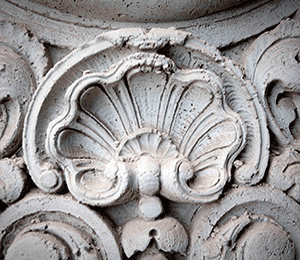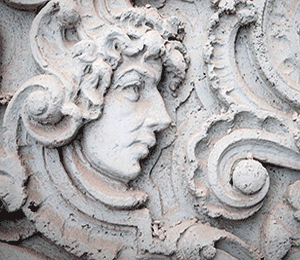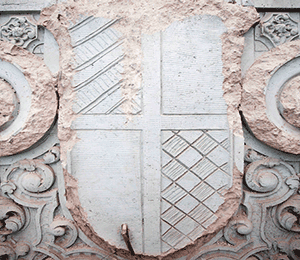
DISCOVERY & RESTORATION
Plans for the Center for Social Justice and Civil Liberties began with the inspired restoration of an historic, two-story, 10,000-square-foot building in downtown Riverside. Known as the Citrus Belt Savings and Loan Building, the 1926 structure features an ornate Spanish baroque facade in the elaborate Churrigueresque style. For decades this sculpted wall was hidden by a modern concrete curtain and was only fully recovered during restoration efforts.
Designed by well-known Los Angeles architect Stiles O. Clements, the building was
constructed for the Riverside Finance Company. The architect also designed the Wiltern
Theatre, and the El Capitan Theatre, among other Los Angeles landmarks. This building
is the only one known that he did in Riverside city and county. At least two other
banks--Sterling Savings and Loan and Imperial Savings--occupied the building before
it became the Citrus Belt Savings and Loan.
In 1951, Citrus Belt Savings purchased the property, and it was reconstructed to include a second floor. In 1961, the building was remodeled and linked to the adjacent facility, including the application of the curtain wall that architecturally linked the two building exteriors.
For 50 years, the “mask" hid the architectural treasure until construction workers punched a hole in the front stucco wall during an inspection. The college district purchased the site at the corner of Market Street and University with future plans.
Following that discovery, the District decided to preserve the historical building and restore the original facade. Three years earlier the District had received a bequest from the estate of a former alumnae, noted Japanese American artist Miné Okubo. Her collection of more than 8,000 artworks, professional papers, and personal memorabilia was being stored at the Riverside City College digital library and the current District Offices. For several months, District officials had been discussing permanent storage, curation and display options. Developing the building as a home for the collection and at the same time creating a larger education center for the study of cultural and social issues offered the perfect solution.
Using redevelopment funds, RCCD renovated the two-story building, restoring the Spanish Baroque facade to its original condition, expanding interior floor space.



